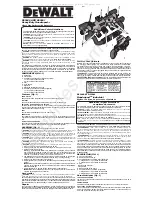
1999 Microchip Technology Inc.
Preliminary
DS21137E-page 15
HCS300
7.0
INTEGRATING THE HCS300
INTO A SYSTEM
Use of the HCS300 in a system requires a compatible
decoder. This decoder is typically a microcontroller with
compatible firmware. Microchip will provide (via a
license agreement) firmware routines that accept
transmissions from the HCS300 and decrypt the
hopping code portion of the data stream. These
routines provide system designers the means to
develop their own decoding system.
7.1
Learning a Transmitter to a Receiver
In order for a transmitter to be used with a decoder, the
transmitter must first be ‘learned’. Several learning
strategies can be followed in the decoder implementa-
tion. When a transmitter is learned to a decoder, it is
suggested that the decoder stores the serial number
and current synchronization value in EEPROM. The
decoder must keep track of these values for every
transmitter that is learned (Figure 7-1). The maximum
number of transmitters that can be learned is only a
function of how much EEPROM memory storage is
available. The decoder must also store the manufac-
turer’s code in order to learn a transmission transmitter,
although this value will not change in a typical system
so it is usually stored as part of the microcontroller
ROM code. Storing the manufacturer’s code as part of
the ROM code is also better for security reasons.
It must be stated that some learning strategies have
been patented and care must be taken not to infringe.
FIGURE 7-1:
TYPICAL LEARN SEQUENCE
Enter Learn
Mode
Wait for Reception
of a Valid Code
Generate Key
from Serial Number
Use Generated Key
to Decrypt
Compare Discrimination
Value with Fixed Value
Equal
Wait for Reception
of Second Valid Code
Compare Discrimination
Value with Fixed Value
Use Generated Key
to Decrypt
Equal
Counters
Encryption key
Serial number
Synchronization counter
Sequential
?
?
?
Exit
Learn successful Store:
Learn
Unsuccessful
No
No
No
Yes
Yes
Yes
21137e.Book Page 15 Monday, October 4, 1999 8:04 AM










































